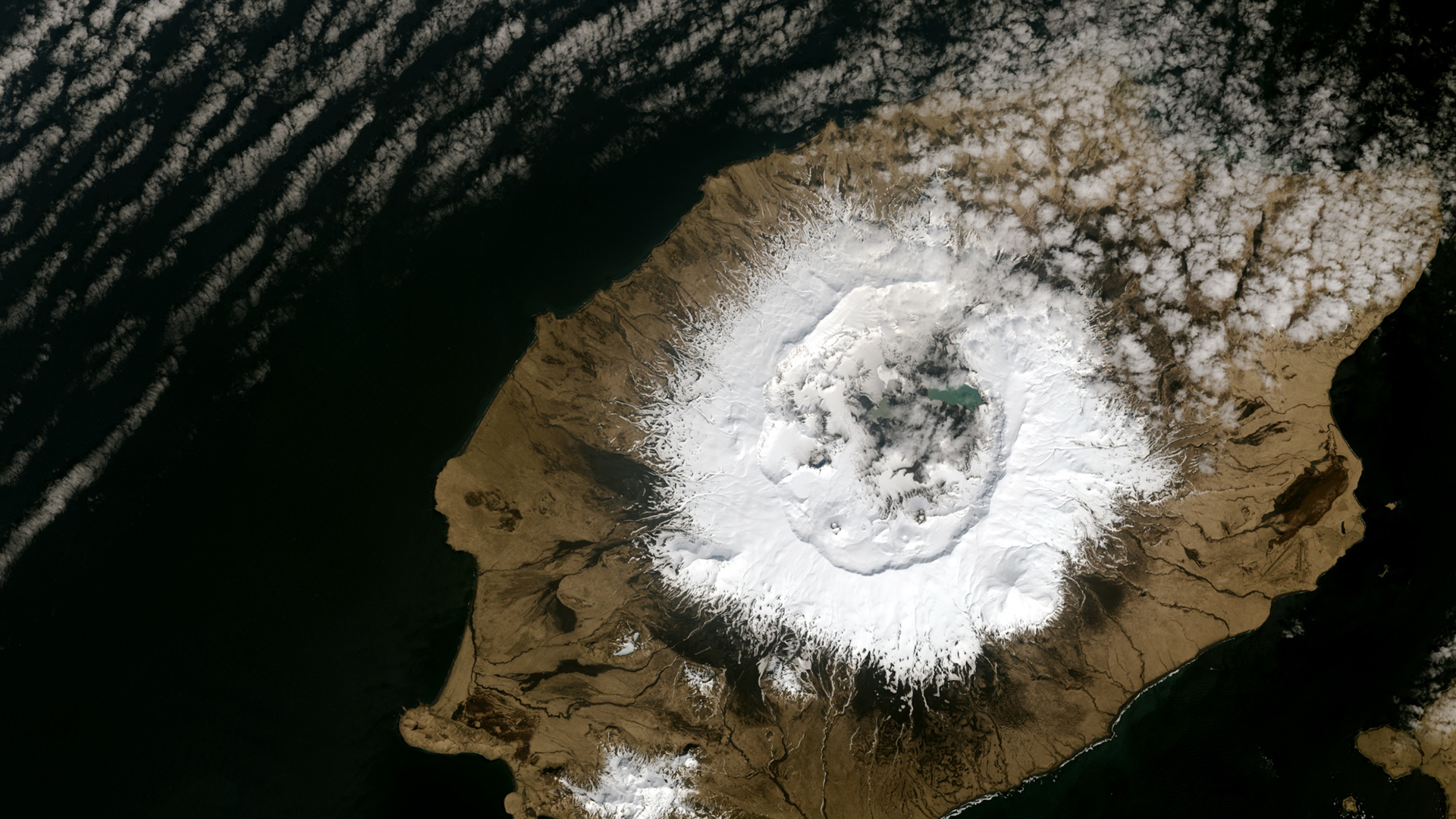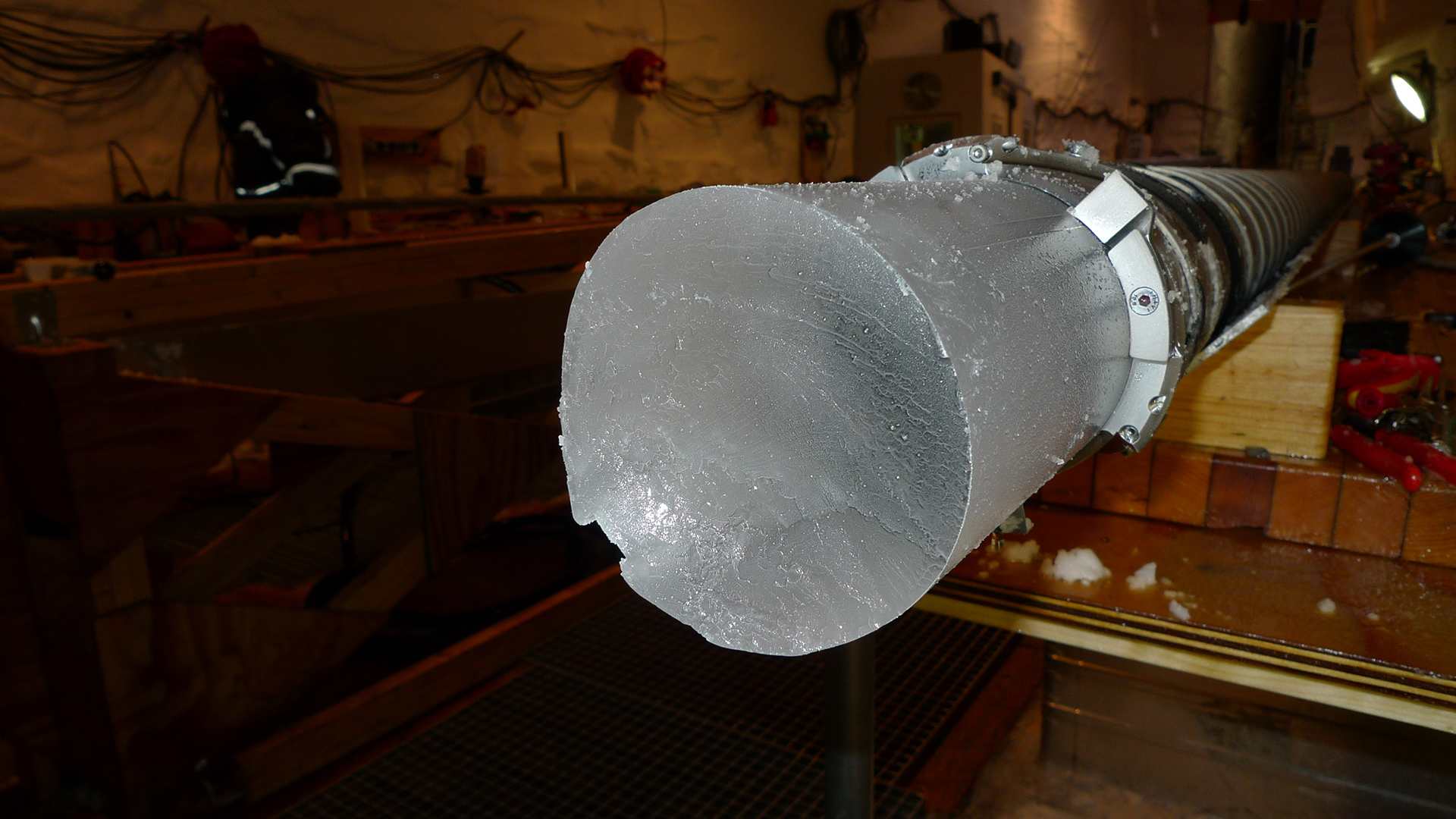Alaskan volcano sealed the fate of the Roman Republic, led to rise of the Empire
The climate impact of Alaska's Okmok eruption millennia ago was far-reaching

A volcanic eruption in Alaska triggered climate change that may have hastened the end of the Roman Republic, leading to the rise of the Roman Empire, a new study finds.
During 43 B.C. and 42 B.C., Europe and North Africa were unusually cold and rainy; temperatures were colder than they'd been in more than 2,500 years. As crops failed and famine and disease took hold, social unrest and political upheaval surged. (It didn't help that Roman dictator Julius Caesar was assassinated in 44 B.C., the year before the cold spell.)
Scientists have long suspected that a massive volcanic eruption caused the two-year-long cold snap. And now, researchers have identified the volcano responsible: Mount Okmok on Alaska's Umnak Island. They used geochemical analysis to confirm that in 43 B.C., one of Okmok's two calderas, Okmok II, produced a massive eruption that would have been powerful enough to change the climate thousands of miles away, according to the study.
Related: The 10 most hazardous countries for volcanoes (photos)
Climate models and climate proxies — imprints of past climate events preserved in plants, rocks, shells and fossils — revealed that during this period the Mediterranean experienced a significant two-year cooling event, with average temperatures dipping by as much as 13 degrees Fahrenheit (7 degrees Celsius), scientists reported in the study. Arctic ice cores held evidence of substantial volcanic fallout (concentrations of sulfur and sulfuric acid) that collected during the first century B.C., suggesting that a volcano was responsible for the cooling.
However, pinpointing the specific eruption was tricky. For volcanic eruptions that are more than a few centuries old, scientists use the amount of radioactive carbon-14, or a version of the element with eight neutrons, to approximate their age. Because carbon-14 decays at a predictable rate, the amount present at a site can reveal how long it's been around. But one drawback of that technique is that carbon-14 dating involves "reasonably large uncertainties," said lead study author Joe McConnell, a research professor in hydrology at the Desert Research Institute in Reno, Nevada.
In fact, prior to this study, the Okmok II eruption was dated to some time between 190 B.C.. and A.D. 50, "based on grasses or other organic material found just below the eruption sequences at the volcano," McConnell told Live Science in an email.
Sign up for the Live Science daily newsletter now
Get the world’s most fascinating discoveries delivered straight to your inbox.
Volcanic "fingerprints"
To more precisely date the Okmok eruption, researchers decided to analyze ice cores. Connecting volcanic fallout from ice cores to a volcano relies on two things. First, the ice must contain tephra particles, or volcanic ash. Second, scientists must match the geochemistry in the particles to that of a specific volcano.
McConnell and his colleagues analyzed six ice cores from Greenland; the quantity of fallout material in the ice suggested that the first-century eruption was a big one, "and we knew that Okmok was one of three or four large eruptions that had occurred about this time," McConnell said. Luckily, there were dozens of tephra shards preserved in the ice cores.
They also discovered unpublished geochemical data from other tephra that had been collected at Okmok, "and we immediately saw that the geochemistry of the tephra we found in the ice had a similar geochemical fingerprint," McConnell said.

In contrast, the tephra "fingerprint" didn't match those of Mount Etna in Sicily; Shiveluch in Kamchatka, Russia; or Apoyeque in Nicaragua, according to the study.
"The match to Okmok was essentially perfect," McConnell said.
Powerful volcanic eruptions eject gas and ash particles into the stratosphere. While ash typically clears within days or weeks, the gas sulfur dioxide can convert to sulfuric acid, which then condenses to form aerosols, according to the U.S. Geological Survey (USGS). Radiation from the sun reflects off the aerosols, cooling the planet's lower atmosphere. In this way, Okmok's massive eruption could have chilled Southern Europe and northern Africa, the study authors reported.
A republic in crisis
Many factors contributed to the fall of the Roman Republic, but Okmok's eruption and the climate change that followed may have been the straw that broke the Republic's back, according to the study.
By 44 B.C., the Republic was on shaky ground, "after decades of political and economic troubles called the 'Crises of the Roman Republic'" and the assassination of Julius Caesar on the Ides of March, McConnell said in the email. Two years of the coldest and rainiest weather in more than 2 millennia — and the widespread hardship that they caused — may have pushed the Republic past a critical tipping point.
Ancient Greek and Roman historians painted a grim picture of the cold years. Frequent snowstorms, disease and food shortages plagued the land, with the Roman army at one point reduced to foraging for bark, wild fruits and animals "never tasted before by men," the scientists wrote.
Famine and disease would have worsened the already tumultuous political situation, perhaps enough for the Republic to collapse and give way to the authoritarian rule of the Roman Empire.
Given the circumstances, it's likely that the extreme weather caused by Okmok's eruption had some impact on historical events, McConnell said. While it's difficult to say for sure how much the volcano directly affected the Republic's fall, "it seems only logical that it must have," McConnell added.
The findings were published online June 22 in the journal PNAS.
- Photos: Fiery lava from Kilauea volcano erupts on Hawaii's Big Island
- In photos: Aftermath of Iceland volcano floods
- Huge Philippines volcano blasts ash 9 miles up as satellites watch (video)
Originally published on Live Science.
OFFER: Save 45% on 'How It Works' 'All About Space' and 'All About History'!
For a limited time, you can take out a digital subscription to any of our best-selling science magazines for just $2.38 per month, or 45% off the standard price for the first three months.

Mindy Weisberger is an editor at Scholastic and a former Live Science channel editor and senior writer. She has reported on general science, covering climate change, paleontology, biology and space. Mindy studied film at Columbia University; prior to Live Science she produced, wrote and directed media for the American Museum of Natural History in New York City. Her videos about dinosaurs, astrophysics, biodiversity and evolution appear in museums and science centers worldwide, earning awards such as the CINE Golden Eagle and the Communicator Award of Excellence. Her writing has also appeared in Scientific American, The Washington Post and How It Works Magazine. Her book "Rise of the Zombie Bugs: The Surprising Science of Parasitic Mind Control" will be published in spring 2025 by Johns Hopkins University Press.











